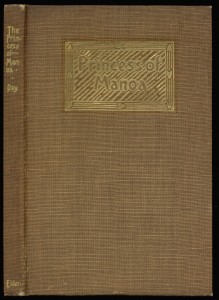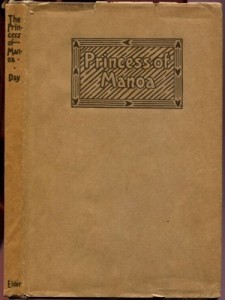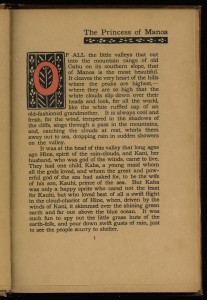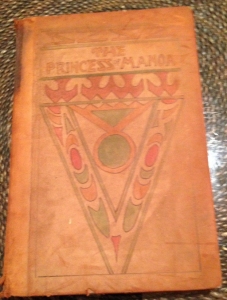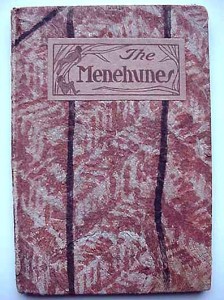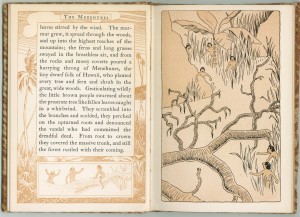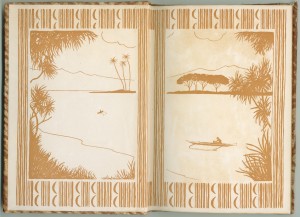
The Princess of Manoa (1906) was the second book of Hawaiian folklore tales collected and retold by Emily Foster Day for Paul Elder. Her first book of Hawaiiana, The Menehunes, published by Elder in 1905, must have been reasonably successful.
The Manoa Valley is in Honolulu, a bit towards Diamondhead from the old town center and then mauka (towards the mountain) along Manoa Valley Road. At the head of the valley is the lovely Lyon Arboretum, and farther up the trail is Manoa Falls.
Two different versions of the cover are known: paper on boards with a full-page decoration of an ocean sunset, and cloth on boards with a small gold-stamped border around the title. There is also a leather edition of the latter design.
Illustrator D. Howard Hitchcock (1861-1943) was an American painter who specialized in depictions of Hawaii, where he lived his entire life. In the San Francisco area, his work was exhibited both at the Panama-Pacific International Exposition in 1915 and the Golden Gate International Exposition in 1939.
